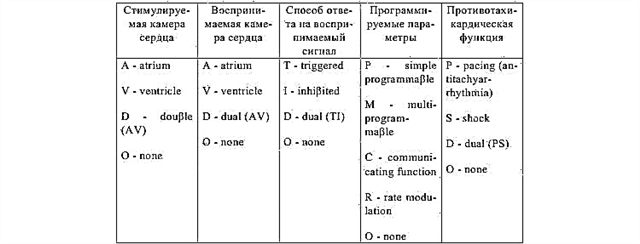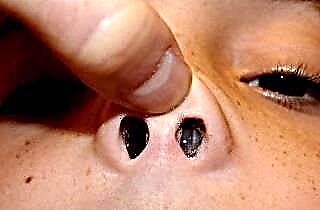Otitis media is an inflammation of the ear, any of its parts. Depending on the localization of the lesion, external, middle and internal otitis media, or labyrinthitis, are distinguished. This separation of otitis media is due to the difference in its clinical picture, the course of the disease, as well as possible complications.

Otitis externa in children is characterized by the mildest course. Symptoms of general intoxication are insignificant or absent.
It proceeds with damage to the skin of the auricle or the external auditory canal. It can be marked in a spilled form or locally. The most typical variant of limited otitis media is a boil, which proceeds with all signs of acute purulent inflammation of the skin.
Otitis externa without fever in a child is a common occurrence.
For infants, this form of ear inflammation is uncommon. In older children, otitis externa can develop as a result of trauma to this area with its further infection. (Most often observed in children 3-4 years old, seeking to pick a sharp object in the area of the external auditory canal).
Diagnosis of this form of the disease is straightforward. A specialist examination is quite enough to clarify the diagnosis. The use of an instrumental method, otoscopy, is necessary only to ensure the integrity of the tympanic membrane and the absence of data for otitis media.
Otitis media is always secondary and is caused by a complication of otitis media or is one of the symptoms of other severe processes in the body. Most often, speaking of otitis media, it is precisely the defeat of the middle ear that is meant. This pathological condition in children is also not an independent disease. Otitis media is a complication of ARVI, childhood infections, and other pathology of the ENT organs, which occurs with a decrease in the patency of the auditory tube. Violation of its drainage function can be caused by edema and accumulation of mucus in its lumen, as well as adenoiditis, as a result of which the enlarged glands squeeze the Eustachian tube from the outside, narrowing the lumen and disrupting the functioning of the middle ear.
Predisposing factors
Inflammation of the ear in children is more common due to the characteristics of the child's body. This is facilitated by the anatomical structure of the auditory tube. In a child, it is shorter, which allows microbes to easily move from the nasal cavity to the middle ear. Due to the fact that children have several times higher incidence of various infections accompanied by rhinitis, the likelihood of developing such a complication as otitis media will be higher.
Prolonged horizontal position also promotes the movement of mucus and pathogens from the nasopharyngeal cavity to the middle ear. The time allotted for sleep in a child significantly exceeds 7-8 hours of a night's rest in adults. In addition, enlarged adenoids are also a pathology characteristic of the child's body. All these circumstances determine the characteristics of ear inflammation in a child and is widespread among children.
Among children with ARVI, a complication in the form of otitis media will develop only in those who have a predisposing structure of this organ and concomitant pathology, therefore, as a rule, otitis media for other children is not contagious.
The main symptoms
It is not difficult to suspect this disease.
The main and constant symptom of otitis media is ear pain.
Its intensity can be different, from a slight noise in the ears to severe intense pain, accompanied by a cry of a child. In addition, otitis media in children is accompanied by hearing loss. The developing inflammatory process in the middle ear affects the eardrum and other structures, malleus, incus and stapes, making it difficult to transmit sound. Moreover, the recovery period for this function can last up to three months.
Additional symptoms of ear inflammation in children, depending on the age and severity of the course of the disease, may include the following signs:
- irritability;
- poor sleep;
- violation of appetite or refusal to eat;
- dizziness;
- lack of coordination;
- nausea, vomiting;
- an increase in body temperature up to 39 degrees.
Difficulty in diagnosis can only cause otitis media in children under one year old. At this age, the child cannot point to the place of the disease and state his complaints. In this case, the parents and the pediatrician are based on indirect evidence. Close observation of such a patient allows one to suspect otitis media in a child based on the following:

- the child tries to take a forced position in bed, lying on the affected ear, while being irritable and capricious;
- trying to touch the affected ear with his hand;
- a sudden cry, especially at night, also testifies in favor of this particular pathology.
A pathognomonic symptom that makes it possible to clarify the diagnosis in children of any age is increased pain in the ear when pressing on the tragus.
Another reliable, but not permanent symptom is suppuration. Its presence characterizes the transition of catarrhal inflammation to purulent. The appearance of otorrhea is noted with perforation of the tympanic membrane. The resulting pus presses on the eardrum, causing ulceration and subsequent perforation. The discharge from the ear is a yellowish or greenish viscous exudate. Blood from the ear with otitis media in a child is not related to acute purulent otitis media. Most often, this is a consequence of trauma and exposure to a sharp object from the outside.
The appearance of otorrhea is of great importance, since it indicates the need for correction of treatment. In this case, topical preparations with an ototoxic effect should be canceled. Antibiotics must be added to the treatment.
Complications of ear inflammation
In addition, it is the acute purulent inflammation that is the most dangerous form of the disease. In most cases, the course of otitis media is quite benign, even despite the presence of frightening suppuration. The perforated eardrum within the next few days is subject to scarring, leaving only a slight scar that does not affect the further functioning of the hearing organ.
However, with incorrect and untimely treatment, the development of acute purulent otitis media can lead to its transition to a chronic form. It is characterized by an undulating current, where suppuration is replaced by a recovery period. Chronic otitis media in children is dangerous because each new relapse is accompanied by an increasing perforation of the tympanic membrane. If a hole diameter of up to 1 mm is scarred in a short time and on its own, then with an increase in the hole, the repair processes proceed much worse.
In most cases, chronic suppurative otitis media is a surgical pathology that requires tympanoplasty, that is, the replacement of the tympanic membrane with an artificial joint.
The presence of a chronic focus in the middle ear can lead to even more serious consequences, the destruction of the ossicles of the middle ear, which are involved in conducting a sound signal to the auditory nerve. The development of deafness in this case is already an irreversible process. Frequent otitis media in a child are dangerous precisely for this.
On the one hand, a predisposing factor for such a course of the disease may be the individual characteristics of a particular patient, whose auditory tube is shorter and narrower than in other children. On the other hand, frequent otitis media in children can be caused by inappropriate use of antibiotics.Stopping their use in a shorter time than prescribed by the instructions and the attending otolaryngologist leads to the development of more resistant microorganisms that are resistant to the treatment.
To prevent the process from taking on a chronic course, antibiotic therapy for otitis media should be carried out for at least 7-10 days.
In addition, the frequency of administration of the drug should be observed.
The presence of otitis media in a child forces adherence to a certain regimen. In particular, the duration of the illness is usually about 7 days. During this time, the patient is not recommended to stay in the fresh air. You can walk with a child with otitis media only after the temperature has returned to normal and there is no suppuration. Otherwise, there is a risk of worsening of the condition due to exposure to low temperatures and the transition of the disease into a chronic form.
A similar attitude to whether it is possible to wash your hair with otitis media to a child. The fact is that this procedure is associated with the possibility of water getting into the affected ear. And this can contribute to the deterioration of the condition, be a predisposing factor for stagnant water in the ear, and the persistence of infection there. Shampooing can be talked about if you close the ear lumen with a cotton swab, plastic wrap, try to eliminate such a danger.
In most cases, the prognosis of the disease is favorable.
Even in cases where the child has repeated cases of ear inflammation, there is a great chance of a successful outcome. Over time, the auditory tube will increase in size and become longer. Such a structure will prevent the penetration of mucus and pathogenic microorganisms into the middle ear cavity, which means the development of inflammation in it.



